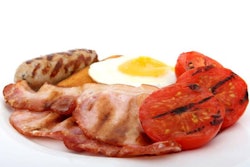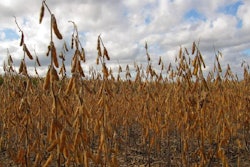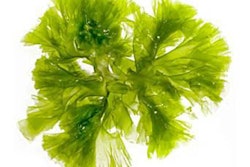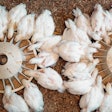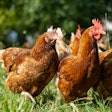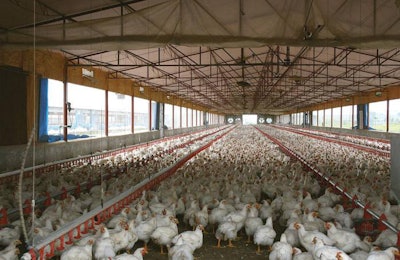
Editor’s note: This is the third installment in a four-part series by Novus International. Read the first and second installments of the Back to Basics series.
As rising production costs pressure profit margins in the poultry industry, nutritionists must continually search for ways to accomplish more with less. The most effective way to achieve the highest production possible is by boosting the flock’s performance through optimal nutrition, management and genetics.
One strategy that can immediately increase efficiency regardless of species is to exchange the mineral source currently being fed with chelated organic trace minerals like zinc, copper and manganese in the form of metal methionine hydroxy analogue chelates (MMHAC).
This technology enables birds to receive optimum mineral nutrition, while including less mineral in the formulation. This results in lower costs, improved animal health, fewer condemnations and greater profitability, combined with reduced environmental impact.
Mineral deficiencies in broilers
The immune function of all poultry species depends on trace minerals. Without proper zinc, young birds may not receive the full benefit of vaccinations. Later in life, zinc-deficient birds are more susceptible to disease, which can result in increased mortality, poor efficiency and ultimately, economic loss. Additionally, trace minerals support healthy tissue development. Zinc and copper are essential to the formation of collagen, a structural protein that gives strength to skin and bones. Manganese also contributes to bone development. Specifically for turkeys, this principle is critical as heavier birds and longer production cycles amplify the leg breakage issue. Deficiencies in any of these minerals can result in reduced performance, leg breakage as birds grow, skin tearing, gait problems and lesions that decrease the marketability of chicken paws.
Footpad lesions can decrease footpad grade, exportability and profit margins. In addition to adequate management, proper trace mineral nutrition can be a major factor in raising both the quantity and quality of export paws. Highly bioavailable minerals strengthen the soles of the feet, making them more resistant to footpad lesions. Additionally, a better grade footpad can be worth nearly twice as much as a downgraded paw. Feeding the correct source of trace minerals in the ration could mean a large increase in export profitability.
Layer operations must also pay close attention to trace mineral nutrition, as the entire process of egg production depends on it. Creating an eggshell requires a layer hen to deposit 30 to 40 times the calcium present in her own skeleton in one year of production. In layers, maintaining mineral balances supports shell strength, the internal structure of the egg and tissue integrity of the unhatched chick. As laying hens age, mineral nutrition plays an increasingly important role, ensuring continued production of high quality eggs and overall well-being of the hen. Zinc, copper and manganese drive the replacement process. Without them, eggshell quality and strength suffer. Supplementing highly bioavailable minerals also extends a hen’s ability to lay high quality eggs as the bird ages, reducing breakage losses common among older layers.
Consider bioavailability nutrients
Depending on the quality of the source of trace minerals fed, up to 80 percent of their nutritional value may be lost in excreta due to lack of bioavailability. Bioavailability is the degree to which a mineral from a particular source can be absorbed and utilized by an animal.
The National Research Council (1994) recommendation for zinc inclusion levels in pullets is 40 ppm. To compensate for lack of bioavailability, commercially accepted standards have risen to as much as 120 ppm, which still does not achieve optimum nutrition.
Chelated trace mineral nutrition is critical to maximizing profitability. From broilers to layers and turkeys, increased bioavailability of trace minerals improves animal health and structure. Healthier animals then produce more efficiently, increasing valuable weight gain for profits and improving meat and carcass quality at the time of processing.
Advances in chelated trace minerals
Over the last several years, technology has driven change in agricultural production, and the poultry industry is no exception. Yet when it comes to trace mineral nutrition, many producers still utilize outdated data to guide their operations as those are widely accepted throughout the industry. Chelated trace minerals offer a better technology that can significantly improve production of all species, while alleviating excretion concerns.
Birds fed highly bioavailable chelated trace minerals like MMHAC exhibit improved joint health and leg and bone strength, as well as meat, carcass and footpad quality. Consider the risk of excreted mineral loss, combined with the missed opportunity for additional profits, and the value is clear. You can’t afford to not re-evaluate your current mineral program and the solutions chelated trace minerals provide.


